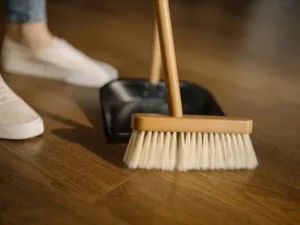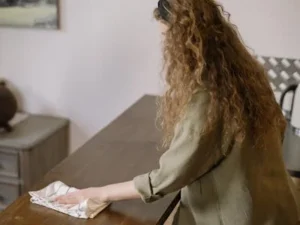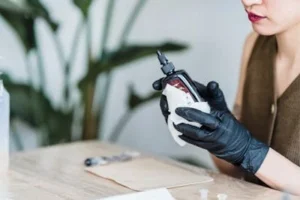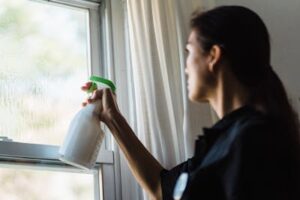Clean Clay Pellets
Clay pebbles are a growing medium that is often used in practice on hydroponics, gardening and aquaponic grounds. They are small and light weight balls made out of expanded clay which is processed at a high temp to get the porous structure. This feature provides perfect chip drainage and aeration to help plants actively grow healthy root systems. However, just like with any medium over time clay pellets can get some debris and salt buildup or other contaminants. This accumulation can be detrimental to plant health and growth. So what the guide is about today, we will be looking at how to clean this clay material and take good care of it so you get most benefits from using in your garden setup.
Why Clean Clay Pellets?
There are a few reasons why you should clean your clay pellets(Network) at least once:
Preventing Disease
Any leftover organic matter will maintain pests or sickness which might injury your vegetation. If clay pellets are reused without cleaning, pathogens carried over from the previous crop can pass to new plants causing infections or infestations.
Healthy Drainage
The porous nature of the pellets can be clogged by dirt, debris, and rock salt rendering them almost useless in drainage as well as aeration support. In order to prevent root rot, so that plant can obtain adequate moisture and in the same time not holding water at its feet is essential.
Better Nutrient Uptake
Clean pellets are more easily absorbed and digested. Additionally, organic matter and salt can also inhibit the ability of these processes by which clay pellets deliver critical nutrients to plants (ie this may result in ignorant growth).
A cleaner garden
Clean the pellets and they will look better in your hydroponic system or garden as well. When dirty, they can detract from the appearance of your setup and make it look like you’re neglecting to take care of everything.
When to Clean Clay Pellets
You should clean clay pellets regularly from your garden. Some cases in point (at that time especially but really, any day):
- End of Each Growing Season
When the growing season ends, clean all pellets before storing them or using again. If you have grown plants that are prone to pests or diseases, this is even more imperative.
- Debris Buildup
When you can visibly see that algae, dirt or salt is now in a noticeable layer on your motor and hardware clean it. Many times, you can actually see the white crusty deposits left on top of your pellets from salt.
- Change of Plants
The primary reason to clean the system, there are always exceptions though, is after a plants type change especially across species with different nutrient requirements. Every plant has different roots and nutrient requirements, as well as the resultant matter being a significant determinant of this transition.
Seasons
Just as the weather changes, so do your plants and their growing conditions. Further, through cleaning of the pellets when you are about to start a new season is also going assist in optimizing your setup for optimal results.
How to Clean Clay Pellets
How To Clean Clay Pellets Cleaning clay pebbles is simple, and if done regularly your plants will thank you. If you follow these momos recipe steps so this is perfect.
Step 1: Gather Your Supplies
- To clean clay pellets, you will need:
- A bucket or container
- A fine mesh sieve or colander
- Fresh water (distilled or collected rainwater)
- Mild soap (optional) [or vinegar to remove tougher residues]
- Some soft bristled brush (like an old toothbrush)
- A towel or drying rack
Step 2: Rinse the Pellets
Put the pellets into a bucket, add water so that they are completely under. This first rinse is designed more for breaking down any debris or soil that might be clinging to the pellets.
Gently Swirl: With the tips of your fingers swirl around these pellets into water. The motion will loosen any crud without splitting the pellets.
Drain the water: Must be very careful not to shed our pellets when doing it with the sieve. That way you get rid of any impurities, but not by throwing away the pellets.
Step 3: Scrub if Necessary
In case the leftover particles are adamant to remove from pellets.
- Make soap solution : Add few drop mild soap or vinegar with water to the bucket. Steer clear of harsh chemicals that may harm your plants.
- Brush with gentle brush: Now dip the brush into prepared solution and softly scrubbing balls. Pay special attention to visible areas of dirt or salt buildup. This may break the pellets so dont push to hard.
- Scrub: Wash the pellets with soapy water or white vinegar and clean thoroughly. This is because any residue remaining can negatively impact the health of plants.
Step 4: Final Rinse
After agitation, the pellets require a final rinse again with fresh water. It is to make sure that no dust or cleaning-agent lefts on surface after rinsing it.
Use clean water: Cap the bucket and fill it again with fresh, cold tap water plus pellets.
Swirl Some More and Drain: Swirl the pellets again and pour off as much water. Continue to repeat this process until the water is clear, telling you that all of these heat beads are clean.
Step 5: Drying the Pellets
- Air Dry Pellets: Lay cleaned pellets on a clean surface or screen. Be sure to spread them in a single layer so that they dehydrate evenly.
- Completely dry: I would call this a requirement because otherwise mold could grow if it is stored wet. It should not take longer than few hours or may be upto a day at max, depends on the environment you are working in.
- Moisture: Check for remaining moisture before you store them. make the shoes to air drier in a nicely well-ventilated place.
Keeping Cleaned Clay Pellets

Given that it clearly more difficult to properly clean and dry pellets than you would think, all the work will be wasted if you store them wrong so make sure:
Breathable containers
Keep away from airtight bags, especially the plastic ones that can accumulate dampness which eventually will grow mold. Mesh bags and cardboard boxes are fine, however.
Another way to organize the bags is by labeling your storage
you can utilize sticky notes, tags name holders on drawers. This reflects the previous cleaning that you practiced and which species were cleaned last encode URIC component Proxy.
Dry and Cool Area
Clay pellets should be stored in a place with dryness, shielded from changing temperatures. This will keep your wigs looking decent, and make them last longer.
Keep out of direct sunlight
Prolonged sun exposure will break down the pellets over time.
How do I clean up the mess?

For instance, here are a few ways to maintain the health of your clay pellets between cleanings.
Overwatering suppression
Algae build-up and debris of this kind are cut down by limiting the watering time. Not only does overwatering are going to drench the pellets but it can also cause anaerobic conditions that favor mold.
Choosing the right nutrient solution
A well rounded, balanced nutrient solution can assist in reducing leftover residue. Remember to always stick according to the advised dilution and application rates so as not to over accumulate salt.
- His advice
Inspect regularly look through your clay pellets for signs of dirt or damage from time to time. This is a prompt visual look can conserve you from more considerable cleaning initiatives later.
- Rotate your crops
Otherwise pests or diseases can get quite comfortable hanging out in those used pellets.
- Add a pre-filter
If you have hard water, using a point of entry system,you will want to reduce the minerals getting into your whole house.
Extra Cleaning Techniques

If you need an alternative method for cleaning or are having a specific issue, here’s what to do:
- Sterilize in Boiling Water
You can boil the clay pellets within water for 10 minutes to guarantee a more comprehensive sterilization of your media. A less common option that is effective against bacteria and pests, but can be a bit labor intensive.
- Hydrogen Peroxide Solution
If you need a stronger sanitization, add one part hydrogen peroxide to ten parts water. Let the pellets soak for about 30 minutes and then be sure to rinse them really well. This is good especially if you suspect any fungal reactions.
- Bleach Solution
If absolutely necessary (generated aforementioned residues) and for extreme contamination, a very diluted bleach solution is 1 part bleach to 10 parts water. Afterwards rinse well with water so that the bleach does not remain.
FAQs
Q: How regularly should I wash my Leca balls?
A: After each grow cycle, or when debris is biologically problematic. Routine upkeep revitalizes the root base, ensuring it remains more attractive and receptive to your plants.
Q: Are the benefit of clay pellets reusable land?
Yes If cleaned correctly clay pellets can be reused a few times. Keep in mind that they must be disease and pest-free before bringing them into zones to protect existing plants.
Q: How Do You Store Cleaned Clay Pellets?
To store them in a series of breathable containers, how to not get mold and insects? It helps to store them correctly so that they last as long and are still effective.
Q:Is it safe to clean with soap or vinegar?
Yes, but be mindful and thoroughly rinse afterwards in order to avoid any residues that may hurt your plants. These solutions should always be mild to prevent damage.
Q: No, you do not need to sterilize the clay pellets.
A: Though disinfecting is not required, it can also help minimize transmitting pests and disease when switching from one type of plant to another. It is good to practice for plant health.
Q: Shouldn’t clay pellets be composted?
They should be reused or recycled (if recyclable) with minimal impact on landfill waste.
Conclusion
Cleaning the clay pellets is one of the most important task that every gardener must perform somehow. Following these steps will allow you to help keep your pellets clean so that they work well and benefit plants as efficiently. Regular maintenance will improve plant health and longitivity of growing medium.
A small effort and a beautiful garden are things that go hand in hand!! Washing and sustaining your clay pellets increases the success rate of your plants by providing them an opportunity to thrive in a clean environment. Happy gardening! If you want to know more about us than click here:
Difference table of the Contant
| Aspect | Before Cleaning | After Cleaning |
|---|---|---|
| State of Clay Pellets | Dirty, with debris, salt buildup, and organic matter. | Clean, with no visible debris or salt accumulation. |
| Drainage | Clogged, impeding water flow and aeration. | Improved drainage and aeration, promoting healthy roots. |
| Nutrient Uptake | Reduced due to buildup of organic matter and salts. | Enhanced ability to absorb nutrients effectively. |
| Plant Health | Risk of disease and pest infestation due to leftover organic matter. | Lower risk of disease, healthier plants with better growth. |
| Visual Appeal | Dirty and unappealing appearance in the garden setup. | Clean and attractive appearance, enhancing garden aesthetics. |
| Cleaning Methods | No cleaning method applied; potential for mold growth. | Regular cleaning routines implemented (e.g., rinsing, scrubbing). |
| Storage Conditions | Risk of mold growth if stored in airtight containers. | Properly stored in breathable containers to prevent moisture buildup. |
| Maintenance Frequency | Infrequent maintenance can lead to significant buildup. | Routine cleaning and inspection prevent major issues. |
| Environmental Impact | Increased waste if pellets are discarded due to contamination. | Sustainable practice through reuse and recycling of pellets. |





4 thoughts on “How To Clean Clay Pellets”